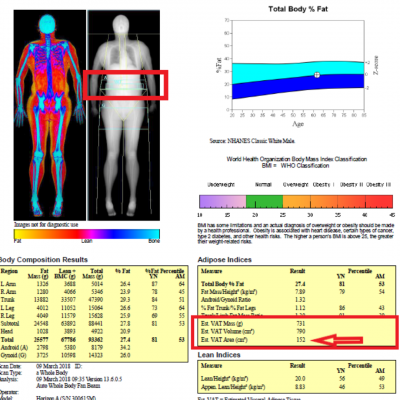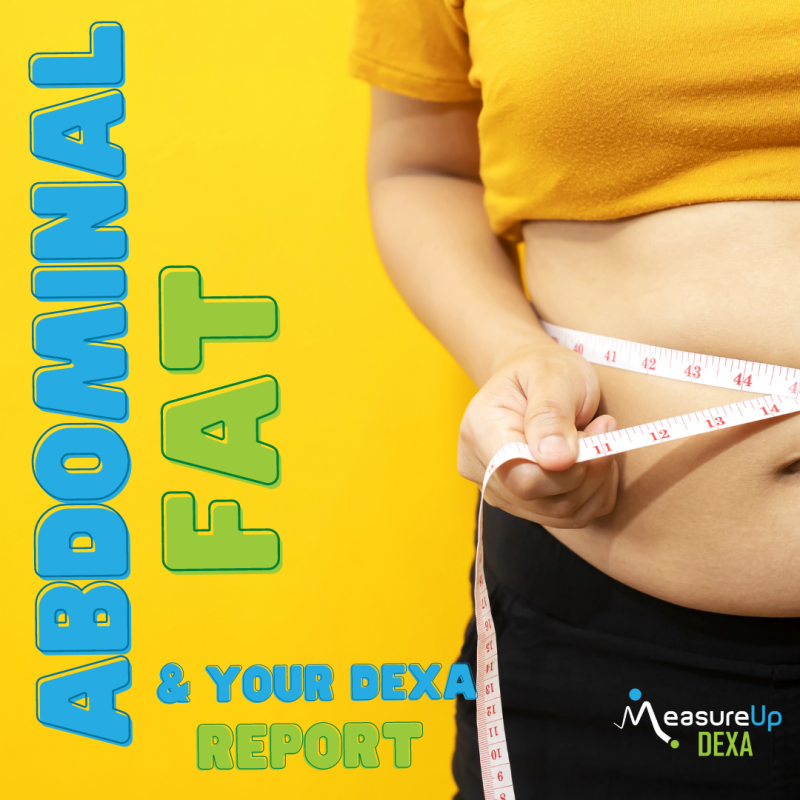How is your adipose tissue – more commonly known as fat, reported in your DEXA Report?
If you’ve only had one scan this will be on the second page at the bottom left-hand corner for the Adipose Indices table.
 Our most important measure is the VAT value.
Our most important measure is the VAT value.
VAT, or Visceral Adipose Tissue, is the fat that lies beneath the abdominal muscle layer and is used to correlate risk of metabolic disorders such as insulin resistance, cardiovascular disease and Type II Diabetes.
One way of checking if you have too much is by measuring your waistline – but this isn’t always accurate as it includes the fat that sits just below your skin, and deep VAT can be high even if you are not carrying a lot of fat just under the surface of your waistline.
DEXA can provide a more accurate estimate of the amount of VAT by analyzing a slice through the abdominal region on your scan. This is reported in the Adipose Indices table.
There are three measures, but the last in the list is used to predict the risk of metabolic disease.
If your score is less than 100cm2 you are considered ‘normal risk’. If you score above 100cm2, your risk is increased. You are in a high-risk category if your measure is greater than 160cm2.
Check out the score on your BC_Report in your online account from your latest scan – you will see your score, your risk category at the top of the page. There is also a helpful graphic which shows you where your score places you on the risk profile.
If you haven’t had a scan or need more information on your VAT – book a scan and extended appointment to find out your risk from visceral adipose tissue.
A fat loss program will help reduce your VAT and improve your risk profile for these diseases. Using a DEXA scan we can accurately calculate an appropriate calorie intake to help you improve your body composition by reducing harmful abdominal fat!

